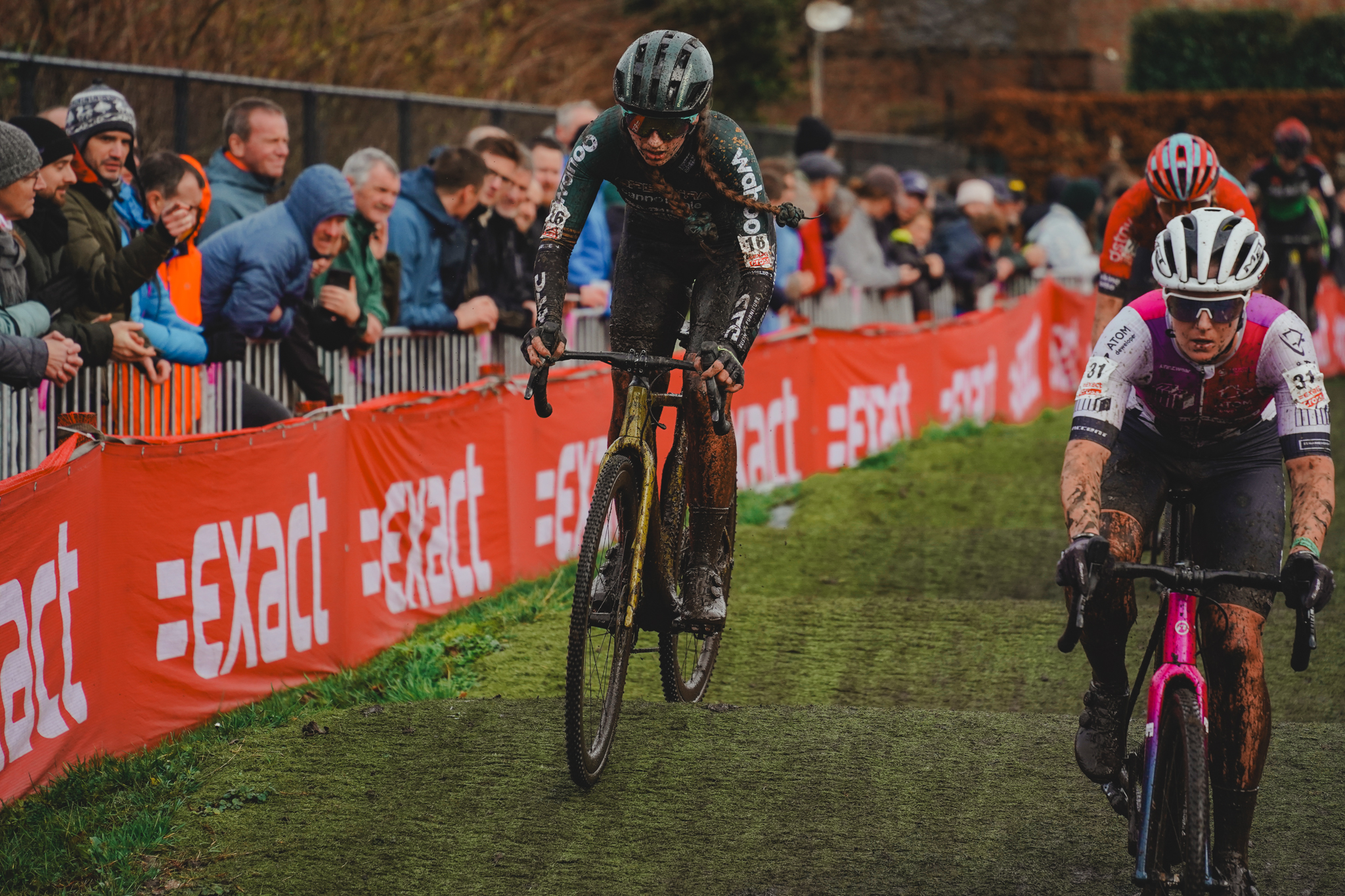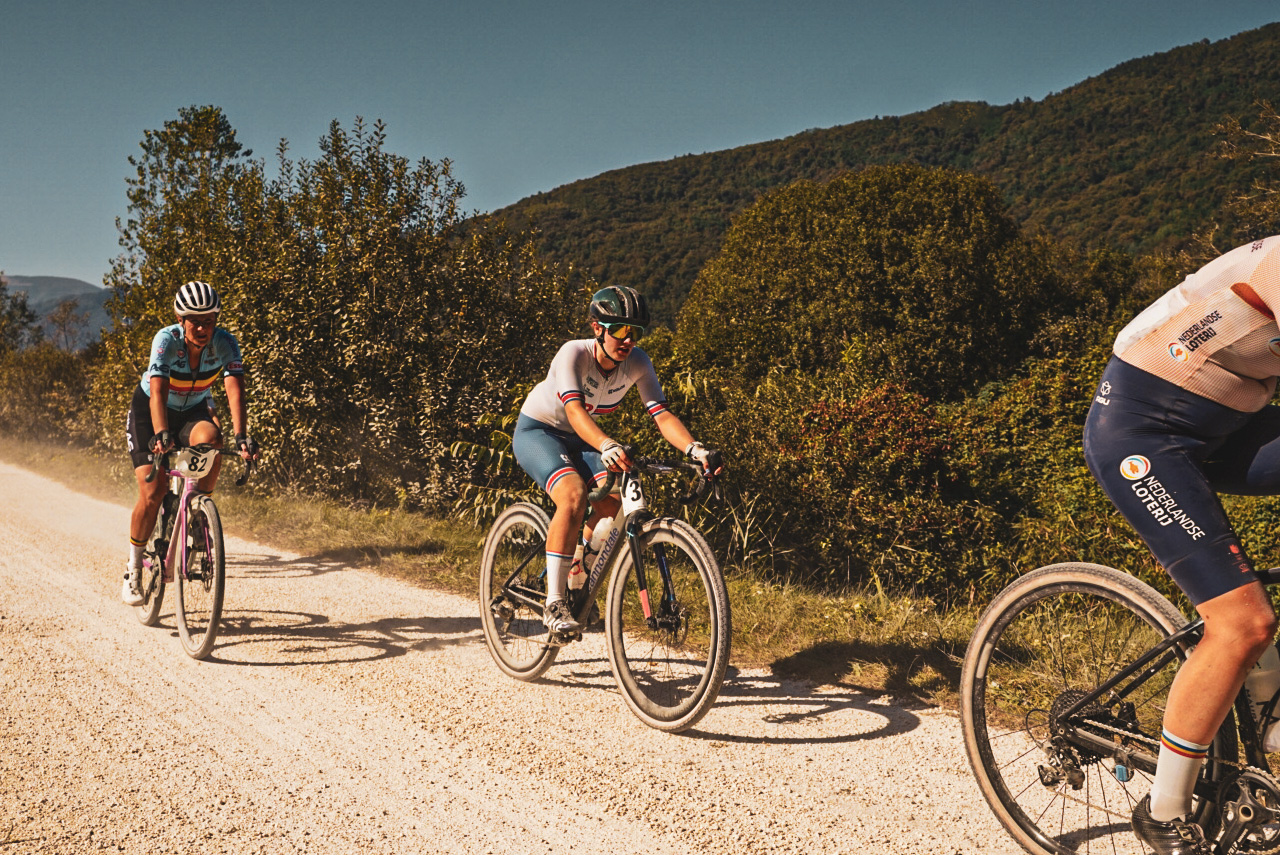
We’re out of summer and into autumn, which means the road season is coming to an end and the cyclocross season is about to start in earnest. But cyclocross isn’t the only drop-bar form of off-road riding that people do now. In recent years gravel riding has taken the cycling world by storm with most brands having several gravel specific bike models in their line-up. Both gravel and cyclocross seem in theory very similar. They are both mostly off-road, both require wider knobbly tires than road bikes, both use drop-bars rather than flat, and both bikes can be used on the road as well as off it. But is that where the similarities stop?
To find out more about the differences between cyclocross and gravel riding, I spoke with British Gravel Champion Xan Crees, who is also an Elite cyclocross rider having won National Trophy rounds and competed in the fabled Superprestige events in Belgium. There are few people as qualified to talk about how to excel in both disciplines as she is.

What skill crossovers are there between CX and gravel?
Skills wise most aspects crossover. Yes, you're unlikely to have to do a full cyclocross dismount mid gravel race but having the ability to react quickly to obstacles and other riders is crucial in both disciplines. Descending, cornering and handling different terrains is an essential skill for cyclocross riders and when transferred across to gravel makes riding much smoother and provides the rider with an advantage.
Personally coming from a cross background has made the transition to gravel racing much easier as that basic skill set is already there. A few riders I've seen who've come to gravel from the road have taken a little while to adapt to riding pure gravel courses.
What are the main differences between the two in the races themselves?
The distance. A cross race is only one hour whereas gravel is typically 100km/60miles, if not more. Once you move on to some of the big iconic races such as the Traka (360km/223miles) and Unbound (321km/200miles) the distance is insane and the race becomes much more of a survival mission where pacing, fueling and hydration is key. Yet at a cyclocross race, only a few riders will even take a gel during the duration and it's even rarer to see a rider with a bottle on their bike.

Cyclocross focus
Mon: Rest day
Tue: Skills session and cross bike efforts and run
Wed: Endurance Ride ( ~3 hours)
Thurs: Recovery Spin ( ~1 hour)
Fri: Cross specific efforts (Usually short sprints)
Sat: Endurance Ride (~3 hours) or activation if racing (~1.5 hours)
Sun: Endurance Ride (~4 hours) or Race
Gravel focus
Mon : Rest Day
Tue : Threshold efforts (~20 min efforts in a 4 hour ride)
Wed: Endurance ride (~4 hours)
Thurs : Shorter interval efforts ( ~2 hour ride)
Fri: Recovery ride (~1.5 hours)
Sat: Endurance ride (~4 hours)
Sun: Endurance ride (~4 hours)
How does training differ for you from CX to gravel?
Whilst there are certainly elements that overlap, my gravel training includes preparing with much longer endurance rides and dialing in fueling strategies. Coming from cyclocross, I had to practice and get comfortable with fueling while racing and just how many carbs I needed to stomach each hour. Whereas, for cyclocross my training is much higher intensity and skills based. There's a lot of hours on the turbo trainer trying to replicate muddy slogs and practicing remounts and starts.
For both disciplines though, I prefer to spend most of my time on the bike I'll be racing on, to really get used to my race bike.
How do you prepare for a gravel season or for a cyclocross season?
For both seasons I say preparation always starts with an off-season! You can't make progress without being rested first. Once I've recovered from the stress, that's when the hard work begins. It's also typically where the planning begins. Personally, planning a cyclocross season is much easier as the races are much more standardised with race length always being between 40 minutes - one hour at a maximum. So then it's just picking which races, whether it's local leagues, the national series or Belgian races. Whereas a gravel race could be two hours, or it could be 12.
When it comes to on-the-day preparation, for now, gravel is much simpler. There are far fewer tyre combinations needed and as gravel currently doesn't permit spare bikes, there's no need for second bikes and spare wheel sets. Instead, it's about making sure you've got enough spares and gels to get around whatever distance you've chosen to tackle.
What lessons can amateur riders take from the elite experience?

Crees’ experience clearly shows that cyclocross and gravel racing require very different styles of training and groundwork. But do amateurs need to employ the same level of targetted focus? The honest answer is that it depends how prepared you want to be.
For those who have been doing gravel this summer and are switching the cyclocross in the winter, there are a couple of important things. Mainly, the intensity will need to increase. Whereas longer gravel rides require a lot more aerobic endurance work, the shorter sharper cross races rely on bursts of high power and dealing with a very high intensity for just a single hour. The aforementioned Traka and Unbound are 360km/223miles and 321km/200miles respectively.

Cyclocross focus:
Mon – Rest day
Tue – Skills session off-road or 5 x 4 min VO2max efforts with 5 min rest (~1 hour)
Wed – Zone 2 ride (1-2 hours)
Thurs – 3x(40/20s for 10 min with 5 min rest) (~1 hour)
Fri – Rest day
Sat – Activation session or steady endurance (~2-3 hours)
Sun – CX Race day or skills session (~1 hour)
Gravel focus:
Mon – Rest day
Tue – 3x(15 min sweetspot, 5 min easy) (~1 hour)
Wed – Zone 2 ride (~1-2 hours)
Thurs – Two sets of 3x(1min over threshold, 2min under) (~1 hour)
Fri – Rest day
Sat – Long endurance ride, practice fuelling (~3-4 hours)
Sun – Gravel ride outdoors (~2.5-3 hours)
As a cycling coach myself, I work with a range of different riders across various disciplines. When you look at the physiological requirements of the events, they differ drastically. As Xan mentioned, the need for fueling becomes very important in gravel events. Gut tolerance to higher carbohydrate loads becomes a vital part of training and requires longer hours.
There is also the need to increase the aerobic capacity, fatigue reduction, lactate clearance, but also upper body and trunk strength. These events require a long time in the saddle, and the terrain can be punishing. Ensuring that the rest of your body can endure the event is just as important and so specific strength and conditioning work becomes another consideration.
For cyclocross, fueling during the race is not required. But then other technical elements are needed such as dismounting, and skills such as jumps are necessary to be as fast as possible. There is also more of a need for explosive power, especially off the line where position at the start can make a large impact to the end result. There’s a reason that cyclocross stars such as Mathieu van der Poel and Wout van Aert are such good sprinters on the road. This also changes the focus of off the bike work, with more explosive movements required in the gym. While on the bike sprinting is a factor, recovery from repeated efforts and the capacity to maintain a high heart rate for a long period of time is also of vital importance.
The most important takeaway. however, is the need for an off-season break. Even riders who race just one summer discipline take a break before getting stuck into winter training; an off-season is essential to mentally and physically recover and recuperate. Throw in a winter season of racing and travel and this becomes even more important. It may be tempting to switch training focus from one discipline to the other straight away, but excluding an off-season is often a surefire way to lead to early burnout and onset of excessive fatigue. This is something that I insist upon for all the riders I coach who compete in races or other events. The focus, discipline, and energy required to spend so much time racing, training and training can be very draining. Ensuring the riders have time to recover from this is vital for long term performance and success as well as enjoyment and mental health.







